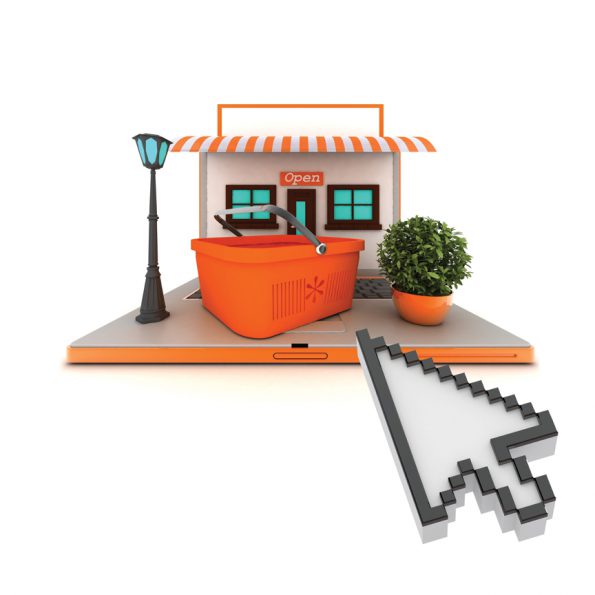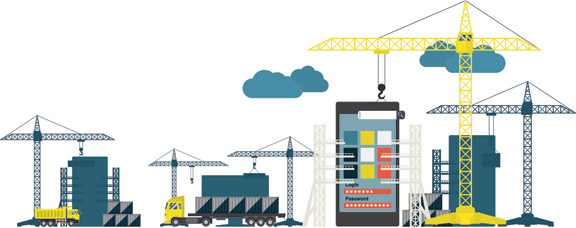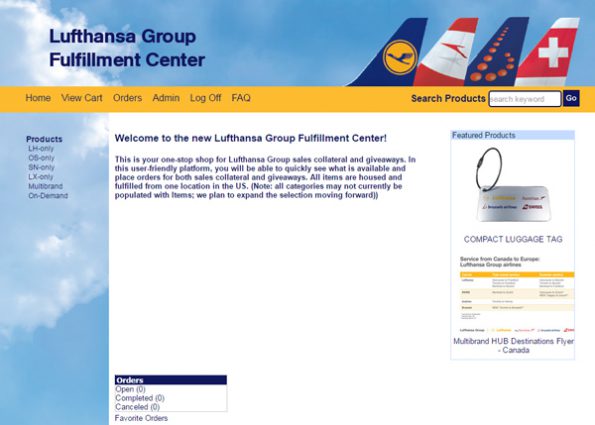One-Click Wonders
Company stores build long-term business for distributors

Like a duck in the water, successful company stores on the surface appear to operate effortlessly, while underneath an intricate, well-timed series of steps is carried out to maintain the store’s profitable momentum. Company stores can be a valuable source of long-term revenue, so passing on the opportunity to build and maintain one for a client could keep you from maximizing your earning potential.
“In today’s world, ecommerce is in almost everyone’s lives,” says Dan Halama, president and founder of supplier Bright Stores, Inc., in Denver, Colorado. “Ecommerce is influencing our daily lives, and because of that clients expect to be able to order online. That requires a company store of some kind, and not having one makes a distributor look behind the times.”
In Halama’s view, the company store “has effectively replaced the order form. I can remember, in the 1990s, sending and receiving order forms by fax. Now the order form better be [accessible] on their mobile phone,” he says.
Bobby Lehew, CAS, believes the primary reason—and subsequently the most profitable one—a distributor should want to offer company stores is because they can secure long-term accounts with residual sales and lifetime values into the millions.
“Traditional statistics in the industry place average client turnover (for clients without a store) at about two years; clients with a store, on average, well exceed this number and can climb into several years or more of loyalty,” says Lehew, chief branding officer for distributor ROBYN in Oklahoma City, Oklahoma. “A $250,000 store represents a lifetime value of $1.7 million. A well-run store will last through multiple buyer transitions and provide stability for both you and the client.”
Few distributors would argue that launching a company store is a laborious task requiring a great deal of manpower and capital—financial and technical, and the steps involved can seem daunting, especially to smaller firms.
DISMISS MISCONCEPTIONS
Distributors might believe that company stores are only for large clients, but this is no longer the case, says Halama. “Fifteen years ago when we started, company stores were reserved for large companies. Now they are more popular among medium-sized and small clients. It helps them control their brand and spend.”
Your client may be a 500-person corporation, or it may be a mom-and-pop diner with a fan base that spans generations. Either way, a company store can help ensure an ongoing source of revenue for both distributor and client. “If you want to compete, even for a small business, with $30,000 to $50,000 in annual spend … it’s kind of low, but they qualify. Even if they’re only spending $30,000, the margin is $10,000,” says Halama.
Lehew says after 25 years of experience and 10 years educating fellow distributors on company stores, he has drawn this conclusion: “They are complex, take a lot of work, and, surprisingly, can even be contentious (while still profitable), but moreover, they can be fruitful—if you are selective about taking on customers who value your service.
“Clients who value your merchandising skills and full-service offerings are purchasing convenience as well as your skillfulness in resolving complex workflows. Any time there is complexity, there is room for profit. Any time you are reducing their labor costs or saving them in opportunity costs, there is room for profit,” he says. “The golden rule of company stores is profit. Gross sales tell you who you work for, gross profit tells you who works for you, but net profit tells you what works—period.”
John Campbell, director of corporate solutions for distributor HALO Branded Solutions in Sterling, Illinois, says his firm’s clients are most often looking for stores that can fulfill B2B requests for employee giveaways, clients and trade shows, personal purchases by employees, and awards and incentives for employees or sales teams.
TECHNICALLY SPEAKING
Distributors who do offer company store opportunities to clients are most likely going to either manage back-end operations themselves, or work with providers that specialize in setting up and managing company stores on their behalf.
“Our most complicated stores have many hundreds of hours of development time into them and are continually evolving as the needs of our more demanding clients warrant. In terms of maintenance, your day-to-day operations may include catalog management, order processing, user management and spending account management,” says Eric Granata, ecommerce director at ROBYN. “There are ways to automate or simplify each of these tasks, which will depend on what ecommerce platform your store is built on.”
Campbell says his company’s clients often want to know if PCI compliance for processing credit card payments is available, and what costs are associated with website development and hosting, and fulfillment services. Distributors, therefore, should at least understand how to integrate with a client’s procurement system to maximize single-sign-on and punch-out shopping cart capabilities.
Many clients don’t speak to Granata’s team in technical terms; rather, they share pain points and ask ROBYN staff to educate them on a solution. “For this reason we spend a lot of time educating the client and managing their expectations before we begin the building process.
“For the distributor, a basic understanding of HTML, CSS and JS, while helpful, is not necessary if you are using one of the many company store solutions on the market,” he adds. “Many technology providers will provide custom development and integration services as well. If you’re after larger and more complex programs, then you want someone on your team with more technical prowess.”
TAKE OWNERSHIP
When it comes to deciding who will shoulder the responsibility for the myriad elements of a company store, a detailed service agreement is crucial. “Written agreements are effective when inventory is part of a store program as it relates to ownership of inventory and payment for product,” says Halama.
With SAGE’s company stores, the distributor is responsible for working with the customer to identify the products they want on the store, building the store and handling fulfillment,” says Ryan Hanchey, distributor sales manager for Dallas, Texas-based business service provider SAGE. “The client is responsible for picking out products and placing the orders.”
Lehew cautions against setting up employee stores for large firms that don’t want to subsidize the cost of items, but rather want employees to pay out of pocket the full price of products such as branded apparel. “Less than five percent of a company’s employees will pay for branded merchandise out of their own pocket,” he says.
“Often, a store will look promising because they have 1,000 employees. But apply the five-percent rule and multiply that by one reasonably priced shirt, and you see that instead of a six-figure program, you have a $1,000 program. In this industry, that’s an order, not a store.”
Hanchey encourages distributors to set and manage expectations with customers, especially where timelines are concerned. “Until you have done a store or two, don’t promise the world until you fully understand your personal limits as well as the store’s limits,” he says.
KNOW THE ‘WHY’ BEHIND THE ‘WHAT’
One of the keys to building and maintaining a successful company store is to dig deep into your customers’ minds, learn their goals and offer a store that’s custom-tailored to the client and the client’s end user.
“The primary reason … a company wants a store is to make the handling of branded merchandise easier: to broaden the offering to multiple locations (divisions, employees, etc) while simultaneously controlling the branding and the purchasing,” says Lehew. “It’s more about convenience, simplicity and control than it is about merchandising—though each is crucial.”
Whether they come to life as general promotional products stores, inventoried fulfillment sites, uniform stores, employee recognition stores or affiliate marketing stores, successful company stores are built on the driving purposes of order efficiencies, spending controls and brand management, says Halama.
“The B2C space is still influencing the expectations of our clients. This translates into demand for a well-designed, mobile responsive ‘shopping’ experience with robust search features, lots of images and product information, and a fast checkout process,” Granata adds.
“One danger in launching a new company store is the fact that neither you nor the customer may know [initially] how a store will actually need to work in order to be effective,” Lehew notes. “Often, a customer will come to you with a need for a store—usually, they are trying to resolve one particular pain point—and not fully understanding the entire organization’s demand (hidden within all store requests are not simply one pain point but multiple pain points).
“This is normal, but it’s also why a store is an organic process. [It is] a sapling that, if nurtured correctly, will grow into a large oak, but it requires cooperation with the customer,” he says.
HALO shares a similar nurturing approach to its clients’ company stores, says Campbell, believing that support entails more than facilitating traditional dropship sales. “Our model is much more than adding to the bottom line directly from a single program. Greater benefits are gained by supporting the client’s programs in order to become the preferred or exclusive distributor. This brings additional value to our account executives as well as to HALO,” he says.
Granata says most of his company’s clients are looking to control purchasing without adding friction for the end buyer. “This is typically accomplished with payment methods such as purchase orders, P-cards and, in some cases, cost centers and approval rules.”
Campbell adds that HALO store clients often want to know whether inventory can be stored and made available on demand to end users, whether products can be changed, and what costs are associated with fulfillment services, website creation and hosting.
“The most important thing is to do a thorough needs analysis and investigate the opportunity,” says Halama. “It’s important for distributors to qualify their company store opportunities. Not all are profitable, because if the client is too stringent, the distributor won’t make money.”
Hanchey agrees. “It all comes down to asking the right questions from the start. Find out as much information as you can so you can determine if a company store is going to be mutually beneficial,” he says.
Building A Successful Company Store

Does your client want a company store? Start by asking these questions:
- What products or types of products do they want?
- What minimums will be listed?
- Will individuals be placing orders or will one person be ordering for everyone?
- Will items be shipped to a set business address or individual addresses?
- What payment methods will be used?
- How quickly will the customer expect to receive the product after placing an order?
- Will the customer require a specific domain name for the store?
- What are the customer’s expectations for order volume?
Complex, custom company stores may include several or all of these elements:
- Custom site design
- Complicated products with many variants
- Variable data print products
- Approval rules
- Spending accounts and promotions
- Third-party software integrations
- Digital asset management
- Dynamic imaging and document creation
- User groups
- Custom order workflows
COMPANY STORES: A DISTRIBUTOR’S TALE
Perry Wehrle, president of PAW Marketing, Inc. in Des Moines, Iowa, and a member of the PPAI Board of Directors, shares his experience providing company stores to clients.
PPB Describe your early experiences with company stores. What type of store(s) were you helping develop for clients, and what industry or industries did those first clients operate in?
Wehrle Early on we relied on and partnered with third-party vendors who worked within our industry and were well versed in what was needed to have an entry-level online store. Our primary client was an insurance company that embraced the co-op business model in which the client paid for half of the cost of the item and the end user—an insurance agent—paid for the other half. This model allowed for very robust sales. After all, who would not like to pay for just half of any promotional item?
PPB What sorts of challenges or trial-and-error moments can you recall, and how did you remedy them going forward?
Wehrle Our biggest challenge is dealing with tight deadlines. When an end user places an order at 3 pm and believes that the order will be shipped at 3:05, this just won’t happen. We are being pushed daily by our client to provide a quicker turnaround time and, in reality, it does take a few hours to accommodate standard orders. Sure, we get those rush orders, and we do everything possible to make those events. But in the end, communication is what we tell our clients is important all the time.

PPB What are clients’ most common concerns about company store management and maintenance, and how do you alleviate those concerns?
Wehrle The first conversation we have is all about the costs, here are some of the key points we cover:
1. Who owns the product?
2. What are the hosting fees?
3. What are the development costs?
4. Any monthly maintenance fees?
5. What are the pick and pack charges?
These points get the conversation started, and from there we can get a better idea of how to build the store as well as the costs which are involved. Transparency is critical for a successful store. Nobody likes surprises.
PPB What are your company’s most common responsibilities to clients regarding store maintenance?
Wehrle We provide our clients with monthly, quarterly and annual reports. We track trends to assure adequate inventory so we can be proactive rather than reactive. Another major report we use is called the “dusty carton” report. In this report, we can see what is not selling and address this with the client so we can develop a solution to assist in marketing items that are not selling successfully.
Elements Of A Service-Level Agreement
To help ensure a productive relationship with company store clients, distributors should consider including the following elements into their service level agreement (SLA):
- A detailed plan and timeline for site development and launch
- Each party’s financial commitment to the development, launch and maintenance of the site
- Each party’s financial commitment to establishing and maintaining product inventory
- Who will be responsible for site maintenance and security
- Who will be responsible for overseeing order processing
- Who will be responsible for reviewing and responding to user comments, questions or feedback
- Who will be responsible for site-related marketing and communication
Jen Alexander is associate editor for PPB.

